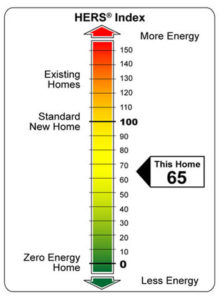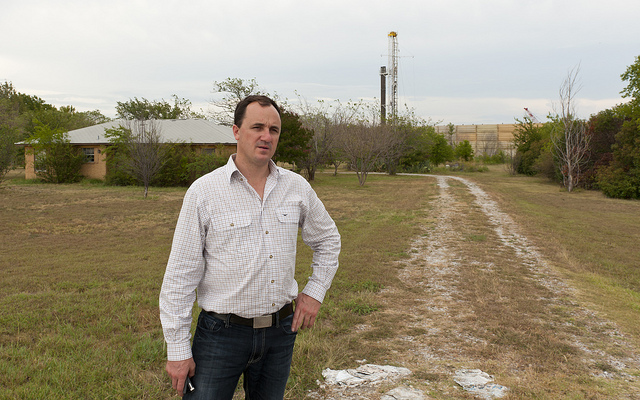According to a study released last year by the National Association of Home Builders (NAHB), energy efficiency is one of the features homebuyers are most interested in. Four of the top 10 most wanted features involved saving energy: 94% of respondents wanted Energy-Star rated appliances, 91% wanted an Energy-Star rating for the whole home, 89% wanted Energy-Star rated windows, and 88% wanted ceiling fans. In addition, 73% agreed that “the projected utility costs of a home would influence purchase decision,” and 9 out of 10 buyers said they would choose a highly energy-efficient home with lower utility bills rather than one costing 3% less without those features. Similarly, according to the National Association of Realtor’s 2014 Profile of Homebuyers and Sellers, 86% of the buyers who responded to the survey thought heating and cooling costs were at least somewhat important when considering buying a home.
Another recent industry survey of NAHB members, “Green Multifamily & Single Family Homes: Growth in a Recovering Market,” found that 62% of firms building single-family homes report that more than 15% of their projects are green. By 2018, 84% of single-family builders expect this level of green activity. And while 19% of single-family builders are already dedicated to green building (doing more than 90% of their projects green), that percentage is expected to double (to 38%) by 2018. For remodelers, 49% already report that more than 15% of their projects are green, and 79% expect to reach that level of green activity by 2018. The survey also indicated that the market value of green homes is increasing: 73% of single-family builders said that consumers will pay more for green homes, up from 61% of single-family builders in the 2012 report. For remodelers, those numbers were 79% in 2014 and 66% in 2012. And the top two reasons single-family builders and remodelers said their customers gave for wanting green homes? Lower energy use and saving money.
According to NAHB Remodelers Chair Paul Sullivan, “The lower operating and maintenance costs of energy-efficient homes are a compelling reason for more home owners to incorporate green features in their remodeling designs.”
So, we know that consumer demand exists for energy-efficient homes, new homes are increasingly being built with energy-efficient features, and some existing housing stock is being remodeled to improve energy efficiency, but there has been a problem appraising homes with these features. Appraisers cannot adjust their opinion of value for a home with energy-efficient features without adequate documentation to support the market value of those features, and it has been very difficult to obtain such documentation. Fortunately, that seems to be changing.
The Residential Energy Services Network (RESNET) is an independent nonprofit organization that develops national standards for energy-efficiency rating and certification systems in the United States. RESNET established the national training and certification standards for Home Energy Rating System (HERS) Raters and Home Energy Survey Professionals. Since 2012, RESNET has also maintained a National Registry of all certified RESNET HERS Raters and homes that have received a HERS Index score. HERS Index scores are reported from 0 to 150. A standard new home meeting current code requirements is awarded a score of 100, while a lower score indicates greater energy efficiency. A typical resale home scores 130 on the HERS Index, indicating lower energy efficiency.
The RESNET National Registry is a source of valuable information to builders, consumers, utility programs, and of course appraisers, but until recently, access to the registry was limited. On October 22, 2014, RESNET announced that it is opening its National Registry to the public.
So, appraisers now have fairly reliable access to home energy rating data, provided the home has been rated since 2012. Open access to the National Registry should make it much easier for appraisers to verify a home’s HERS Index score. Previously, that data may have been included in the local multiple listing service (MLS) data, but even then, the MLS data was sometimes unreliable because a property could be given a HERS Index score of 0 because the rating was unavailable rather than because it was a zero-energy home. It’s not a perfect solution, but it’s a tremendous improvement. As more homes listed in the MLSs have accurate HERS Index scores recorded, it will be easier for appraisers to meet secondary mortgage market guidelines that require pairing sales to develop adjustments for energy efficiency.
The appraisal industry is also doing its part to address these issues. The Appraisal Foundation has tasked the Appraisal Practices Board (APB) with identifying areas where additional appraisal guidance may be needed and issuing voluntary guidance on appropriate valuation methods and techniques. The APB therefore established a panel of subject matter experts to address the valuation of green and sustainable buildings. On November 10, they issued the third exposure draft of the first of three expected valuation advisories on this topic. If you are interested in submitting comments on this valuation advisory, comments should be sent in writing to the APB before the deadline of December 12, 2014.







Recent Comments